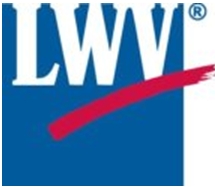- Home
- Events
- Investigations
- News
- OPINION
- Police/Fire/EMS
- Politics
- Sports & Schools
Election Coverage 2014 – New York State Proposals
 This Voter Guide was created by The Legue of Woman Voters of Suffolk County. It will help you evaluate the New York State proposals that will be on the November 2014 ballot.
This Voter Guide was created by The Legue of Woman Voters of Suffolk County. It will help you evaluate the New York State proposals that will be on the November 2014 ballot.
PROPOSAL NUMBER ONE
FORM OF SUBMISSION (how the proposal will be presented to you on the ballot): Revising State’s Redistricting Procedure
The proposed amendment to sections 4 and 5 and addition of new section 5-b to Article 3 of the State Constitution revises the redistricting procedure for state legislative and congressional districts. The proposed amendment establishes a redistricting commission every 10 years beginning in 2020, with two members appointed by each of the four legislative leaders and two members selected by the eight legislative appointees; prohibits legislators and other elected officials from serving as commissioners; establishes principles to be used in creating districts; requires the commission to hold public hearings on proposed redistricting plans; subjects the commission’s redistricting plan to legislative enactment; provides that the legislature may only amend the redistricting plan according to the established principles if the commission’s plan is rejected twice by the legislature; provides for expedited court review of a challenged redistricting plan; and provides for funding and bipartisan staff to work for the commission. Shall the proposed amendment be approved?
 WHAT WILL THIS AMENDMENT DO IF APPROVED?
WHAT WILL THIS AMENDMENT DO IF APPROVED?
Under the current redistricting process, the legislature is responsible for drawing the lines and legislators constitute the majority of the commission that drafts new district lines. Under the proposed amendment to the State Constitution, the commission will consist of ten non-legislative members: eight members who are appointed by the four legislative leaders and two members appointed by the original eight, who cannot have been enrolled in either of the two major parties in the preceding five years. The amendment would prohibit certain individuals from serving on the commission, including: any person who has served in the New York state legislature in the last three years, statewide elected officials, members of Congress, spouses of these groups, legislators’ staff, lobbyists, state officers or employees and party chairs.
The amendment also creates a timeline for the redistricting process and new criteria for drawing district lines. District lines cannot be drawn to discourage competition, nor can they be drawn for the purpose of favoring or disfavoring incumbents, particular candidates or political parties. The amendment establishes new rules for passage of a plan and requires that twelve public hearings be held across the state. It also requires that maps and data be made available to the public in a form that allows the public to review, analyze and comment upon plans and develop alternative plans. The legislature will be allowed to amend the commission’s plan(s) according to the criteria in the amendment after two “up or down” votes without amendment.
WHAT IS THE BACKGROUND ON THIS PROPOSAL?
This proposed constitutional amendment was passed twice by the legislature following the 2010 census and the 2012 redistricting process. It followed on many decades of attempts to reform the process.
Proponents of the amendment argue that this will create a fairer redistricting process that bans political gerrymandering, has a clear timeline, creates new opportunities for public participation and that the legislature does not have a ‘free hand’ in amending the commission’s plans. Proponents further argue that composition of the proposed commission is a significant improvement because it prohibits those with conflicts of interest, including legislators, from serving on the commission. They also argue that since the proposed commission will include appointees by the majority and minority party leaders in each house, in addition to appointees who are neither Republicans nor Democrats, it will allow for meaningful participation in the process by minority parties and third parties.
Opponents of the amendment argue that it does not go far enough in adequately reforming the redistricting process. They object to the fact that eight of the ten commissioners are appointed by legislative leaders and are critical of the legislature’s power to amend the plans if they fail to achieve legislative approval after two votes. They argue that this is the equivalent of the legislature drawing its own lines since the Commission’s plans are ultimately approved by the legislature. In addition, opponents object to the proposal’s requirement that future mapmakers must consider the core of existing districts when drafting new ones. Opponents also argue that the structure of the commission will result in partisan gridlock and that voting rules for both the commission and legislative approval are overly complex.
PROPOSAL NUMBER TWO
FORM OF SUBMISSION (how the proposal will be presented to you on the ballot): Permitting Electronic Distribution of State Legislative Bills
The proposed amendment to section 14 of Article 3 of the State Constitution would allow electronic distribution of a state legislative bill to satisfy the constitutional requirement that a bill be printed and on the desks of state legislators at least three days before the Legislature votes on it. It would establish the following requirements for electronic distribution: first, legislators must be able to review the electronically-sent bill at their desks; second, legislators must be able to print the bill if they choose; and third, the bill cannot be changed electronically without leaving a record of the changes. Shall the proposed amendment be approved?
WHAT WILL THIS AMENDMENT DO IF APPROVED?
Currently, the State Constitution requires that all bills be printed and delivered to the desks of members in paper form. This proposal would allow bills to be distributed to members in electronically written format. Legislators would have the option of continuing to receive paper bills if they so choose.
WHAT IS THE BACKGROUND ON THIS PROPOSAL?
The New York State legislature spends over $325,000 per year on paper and ink. They print 19 million pages of materials during legislative session every two years, including the full text of all bills. More than half of state legislatures have taken steps to eliminate or reduce paper use.
Proponents of the amendment argue that allowing bills to be distributed to the desks of members in electronic form will save taxpayer dollars and reduce paper waste. Proponents suggest that this amendment offers an environmentally friendly alternative to paper bills and will help modernize the way state government operates.
The League of Women Voters of New York State could not identify any organizations or expressed opinions in opposition to this
amendment.
PROPOSAL NUMBER THREE
FORM OF SUBMISSION (how the proposal will be presented to you on the ballot): The Smart Schools Bond Act Of 2014
The SMART SCHOOLS BOND ACT OF 2014, as set forth in section one of part B of chapter 56 of the laws of 2014, authorizes the sale of state bonds of up to two billion dollars ($2,000,000,000) to provide access to classroom technology and high-speed internet connectivity to equalize opportunities for children to learn, to add classroom space to expand high-quality pre-kindergarten programs, to replace classroom trailers with permanent instructional space, and to install high-tech smart security features in schools. Shall the SMART SCHOOLS BOND ACT OF 2014 be approved?
WHAT WILL THIS PROPOSAL DO IF APPROVED?
Revenue received from the sale of Smart Schools bonds would be used for capital projects related to educational technology, including but not limited to: purchasing educational technology equipment and facilities, such as interactive whiteboards, computer servers, desktop and laptop computers, tablets and high-speed broadband or wireless internet connectivity for schools and communities; constructing and modernizing facilities to accommodate pre-kindergarten programs and replacing transportable classroom units with permanent instructional space; and installing high-tech security features in school buildings.
WHAT IS THE BACKGROUND ON THIS PROPOSAL?
On April 17, 2014, Governor Cuomo announced the Smart Schools Commission, charged with exploring how to invest the two billion dollar bond proceeds in school technology upgrades. Potential allocations from the bond act have already been determined for each school district. School districts will be required to submit a plan to the Smart Schools Review Board describing how the funds will be used. School districts will be required to provide technology to nonpublic schools within the district upon request.
Proponents of the amendment argue that disparities of classroom technologies exist across school districts and the Act will increase students’ access to classrooms that are equipped with advanced technologies, enabling them to gain the skills necessary to succeed in the 21st century.
Some opponents of the amendment have argued that the technologies will be obsolete by the time the state is finished paying for them. Others have expressed concern that equipping classrooms with advanced technologies without ensuring the availability of personnel that know how to use and train others on the technology could result in underutilization. Also, opponents feel that public dollars should only be allocated to public schools, rather than parochial or private schools.
One Response to Election Coverage 2014 – New York State Proposals
You must be logged in to post a comment Login




.png)
Pingback: Election Coverage 2014: Letter To The Editor – Smart Schools Technology Bond Act | The Huntingtonian